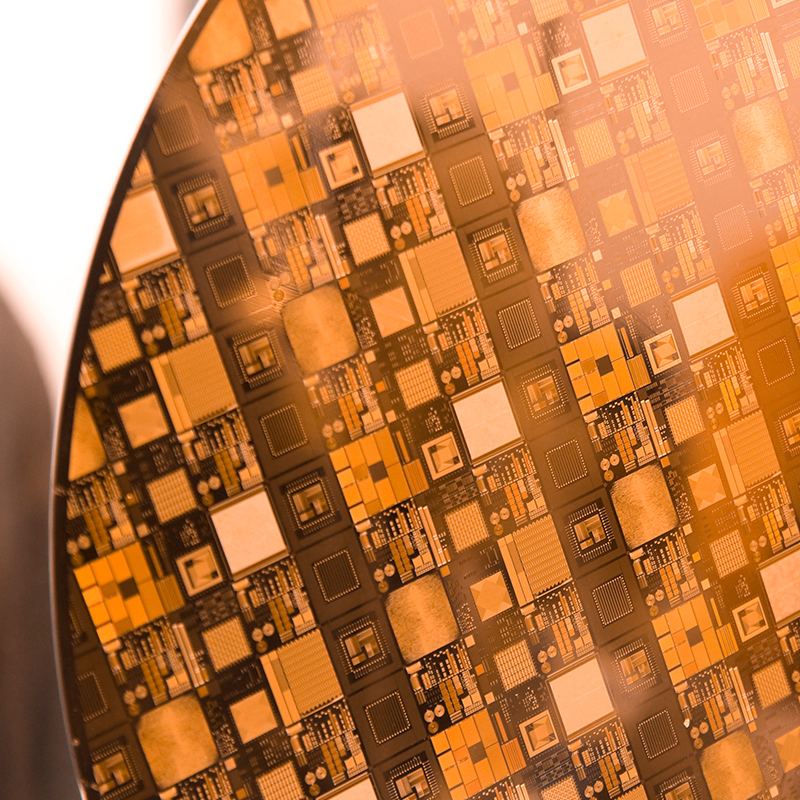Device Variability in Silicon
Author: Brandon Severin
March 2022



Experiments remain a key part of the scientific method, whether you are dropping spheres off the Tower of Pisa or firing electrons at a pair of slits. Regardless of the experiment, scientists and engineers like to be as efficient as possible. Efficiency is seldom achieved as many experimentalists have to work with tools available at the time.
Realising the vision of a quantum computer relies on lots of experiments. There are many different possible architectures that future quantum computers could be based upon. These architectures include: superconducting qubits, ion trap qubits, spin qubits in semiconductors, and nitrogen-vacancy centres in diamond [1 – 4]; each architecture has its own advantages and disadvantages over the other. To build a quantum computer that is fault-tolerant and universal we are going to need lots of qubits, on the order of millions [5, 6]. To get there, the fundamental building blocks and base architectures will have to be reliable and well understood.
Within quantum architectures, no two devices are the same. Each silicon semiconductor or superconducting chip [7] must be tuned to reach operating conditions. This “device variability” exists regardless of architecture. In the name of experiments and development ideally, this tuning process is as swift as possible. Unfortunately, this is not the case, many experimentalists lose hours coding up in-house software solutions to squeeze extra drops of efficiency into their workflow. Those without programming skills or expertise are left to tune their experiment manually – they spend days working their sample into operating shape by hand. Fiddling with dials, wrestling with command prompts and drenched in sweat, tears begin to tickle cheeks as one realises this process must be repeated for the next sample, and the next one, and the one after that.
For the development of quantum technologies, it is important for experimentalists to efficiently characterise samples and get them to operating conditions. Moreover, with the aim of achieving millions of qubits, tuning each one manually by hand renders the problem intractable. Rapid characterisation can provide insight into both new science and key engineering challenges such as reliable fabrication. At present, this iterative development loop is difficult to kickstart and maintain at a reasonable pace. Due to the lack of intelligent quantum device control solutions, very few teams try to understand device variability. It is more seen as a hindrance to getting to the next step of their experimental goal.
There are multiple software solutions present in the quantum ecosystem all occupying different parts of the stack. At one end there are software development kits to write and interact with quantum circuits, such as Qiskit. On the other end, there are frameworks for direct data acquisition including interfaces with hardware commonly found in quantum technology labs, such as QCoDeS. Between the two ends, there is a deep abyss, void of cross-platform/device control software solutions. In desperation, many teams attempt to fill this void by creating their bespoke software solutions or forking code and cobbling together a framework upon unfamiliar foundations. With the turnover of new hires and a rapidly evolving quantum technology space, in-house software rarely gets maintained unless companies employ a large dedicated team of software engineers. Teams often lack the stewardship to pass on their development kits to the next generation but find themselves re-assuming the role of Sisyphus pushing the boulder back up the hill.
QuantrolOx has deep technical expertise in quantum device tuning and characterisation. Over the last 5 years, its founders have pioneered research in applying machine learning to real-world experiments, demonstrating various new tuning and characterisation techniques in laboratories across the world [8 – 13]. The principles and algorithms are easily applied across quantum architectures as well as being necessary for the realisation of these architectures. QuantrolOx employs experienced software engineers who specialise in managing and maintaining complex software so that you don’t have to. Through this, QuantrolOx can establish new standards in the quantum software industry. Providing an effective solution to device characterisation and tuning will allow us to overcome device variability, thereby accelerating the pathway to the development of universal fault-tolerant quantum computers.
About the author: Brandon Severin is a PhD student in the Natalia Ares Group at the University of Oxford researching A.I. for Qubit Readout. Former President of the Oxford Blockchain Society.
References
[1] Wendin, G. (2017). Quantum information processing with superconducting circuits: a review. Reports on Progress in Physics, 80(10), 106001. https://doi.org/10.1088/1361-6633/AA7E1A
[2] Häffner, H. et al. (2008). Quantum computing with trapped ions. Physics Reports, 469(4), 155–203. https://doi.org/10.1016/J.PHYSREP.2008.09.003
[3] Hanson, R. et al. (2007). Spins in few-electron quantum dots. Reviews of Modern Physics, 79(4), 1217–1265. https://doi.org/10.1103/REVMODPHYS.79.1217/FIGURES/49/MEDIUM
[4] Liu, G.-Q., Pan, X.-Y. (2018). Quantum information processing with nitrogen–vacancy centers in diamond*. Chinese Physics B, 27(2), 020304. https://doi.org/10.1088/1674-1056/27/2/020304
[5] van Meter, R. et al. (2013). A blueprint for building a quantum computer. Communications of the ACM, 56(10), 84. https://doi.org/10.1145/2494568
[6] Preskill, J. (2018). Quantum Computing in the NISQ era and beyond. Quantum, 2(July), 79.
https://doi.org/10.22331/q-2018-08-06-79
[7] Kjaergaard, M. et al. (2020). Superconducting Qubits: Current State of Play. Annual Review of Condensed Matter Physics, 11, 369–395.
https://doi.org/10.1146/ANNUREV-CONMATPHYS-031119-050605
[8] Ares, N. (2021). Machine learning as an enabler of qubit scalability. Nature Reviews Materials 2021 6:10, 6(10), 870–871. https://doi.org/10.1038/s41578-021-00321-z
[9] Lennon, D. T. et al. (2019). Efficiently measuring a quantum device using machine learning. Npj Quantum Information 2019 5:1, 5(1), 1–8. https://doi.org/10.1038/s41534-019-0193-4
[10] Nguyen, V. et al. (2021). Deep reinforcement learning for efficient measurement of quantum devices. Npj Quantum Information 2021 7:1, 7(1), 1–9. https://doi.org/10.1038/s41534-021-00434-x
[11] van Esbroeck, N. M. et al. (2020). Quantum device fine-tuning using unsupervised embedding learning. New Journal of Physics, 22(9), 095003. https://doi.org/10.1088/1367-2630/ABB64C
[12] Moon, H. et al. (2020). Machine learning enables completely automatic tuning of a quantum device faster than human experts. Nature Communications 2020 11:1, 11(1), 1–10.
https://doi.org/10.1038/s41467-020-17835-9
[13] Severin, B. et al. (2021). Cross-architecture Tuning of Silicon and SiGe-based Quantum Devices Using Machine Learning. https://arxiv.org/abs/2107.12975v1
